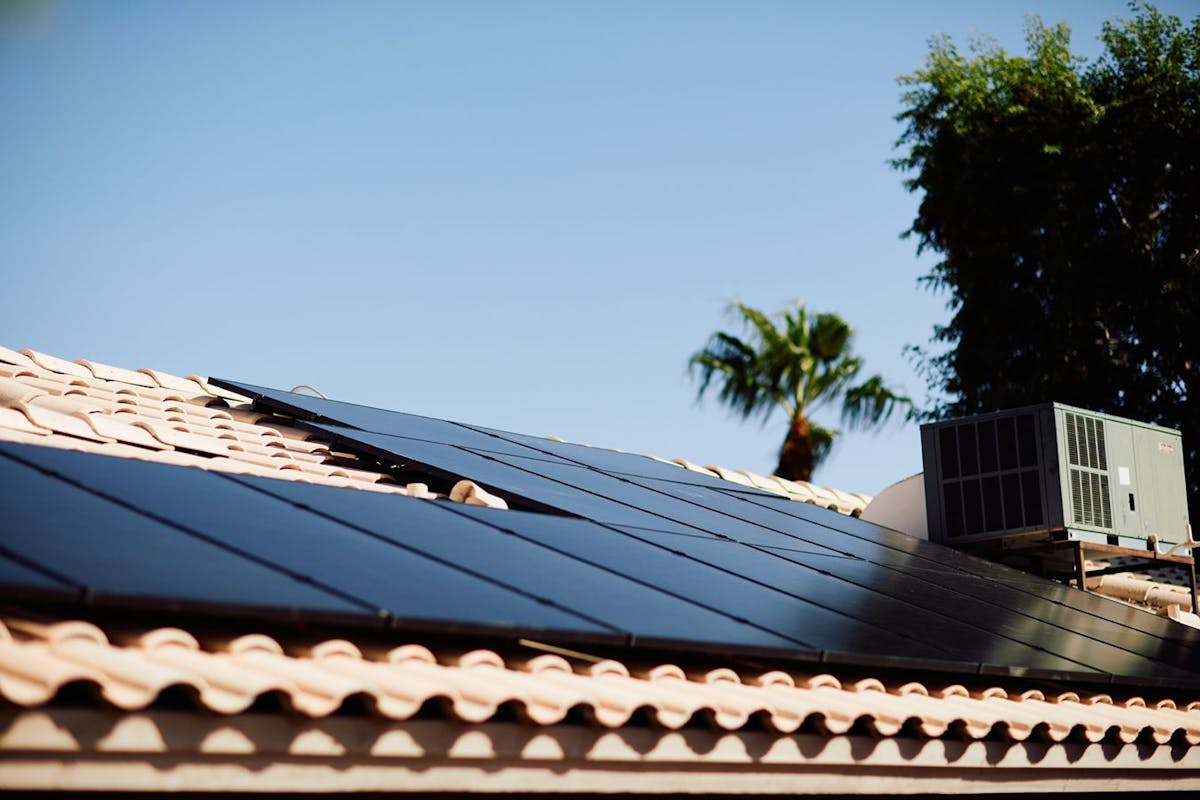Solar Leasing Represents Affordability and Savings for Americans
Last edited

Author
Andrew Blok
Electrification and Solar Writer and Editor

Editor
Ryan Barnett
SVP, Policy & New Market Development

When the federal solar tax credit for purchased panels was slated to sunset at the end of 2025, some people saw the end of the residential solar industry and the savings and security it provided the average homeowner. While the expiration of the 25D tax credit does narrow the pathway to purchasing solar panels for some, a wider, more accessible and affordable path to solar’s benefits still exists.
Through third party-ownership — the blanket term for solar leases and power purchase agreements — homeowners and landlords can still get solar panels at home, lower their energy bills, and gain some independence from the relentless rise of energy prices. What’s more, the new energy generation that’s set to come online through residential solar leases and PPAs will provide massive and aggregate support to the grid.
See how much you can save by going solar with Palmetto
Savings from distributed energy resources are alive and well
The predominant draw of residential solar has always been electricity bill savings, with energy independence and cleaner living nice knock-on benefits. It’s not uncommon for projected 25-year savings to reach tens of thousands of dollars. The case for distributed generation is stronger than it’s ever been.
The problem
Since 2020, the average annual increase in residential electricity rates was between 3% and 10.1%, according to data from the US Energy Information Administration.
| Year | Average electricity rate (cents) | Percent change from previous year |
|---|---|---|
| 2020 | 13.15 | 1.08% |
| 2021 | 13.66 | 3.88% |
| 2022 | 15.04 | 10.10% |
| 2023 | 16 | 6.38% |
| 2024 | 16.48 | 3.00% |
| 2025 (projected) | 17.25 | 4.70% |
| 2026 (projected) | 17.94 | 4.00% |
While reporting for 2025 won’t be finalized for several months, EIA’s latest Short Term Energy Outlook forecasts an increase of 4.7% and 4.0% in 2025 and 2026 respectively. Already in 2025, the average monthly rate has shown consistent increase, too.
| 2024 avg (Jan-Aug) | 2025 avg (Jan-Aug) | Increase | Inflation during same period |
|---|---|---|---|
| 16.38 cents/kWh | 17.12 cents/kWh | 4.52% | 2.65% |
Americans are feeling the impact on household budgets: 44% of Americans cite their electric bill as a major stressor, according to recent research. Four in five people said their electric bill was higher than it was a year ago and 76% of Americans agree we’re living in a “cost of living crisis.”
The average American couldn’t afford a $1,000 expense at the start of 2025. Nearly 80 million Americans are struggling to pay their utility bills, according to the nonpartisan consumer education nonprofit Powerlines.
While electricity bills aren’t the only rising cost, reducing them can help address the affordability crisis many Americans are facing.
The solution
For consumers, third party ownership of distributed generation resources requires no upfront expense.
Leasing a solar or solar and battery storage system can reduce and control long-term energy expenses without the up front investment. Consumers are simply purchasing power at a lower fixed rate than their incumbent electric utility offers.
According to Palmetto’s internal estimates, consumers can effectively reduce their electric rate by up to 60% with a solar lease through LightReach, depending on their utility.

See what home electrification can do for you:
Residential solar leasing benefits the grid
Right alongside electricity rates, demand for electricity is rising, thanks in part to increasing demand for AI computing and data centers. A recent report from consulting firm ICF projects that electricity demand in the United States will rise by 25% by 2030 and by 78% by 2050.
Without rapid expansion of electricity generation, meeting that increased demand will put further upward pressure on electricity prices.
Distributed energy resources have already been critical in propping up the grid in certain areas. Abundant solar and battery storage resource capacity have helped meet increasing demand in Texas and elsewhere.
Customer-sited distributed generation and storage, since it directly benefits residents and doesn’t have the siting issues larger projects face, can be quickly deployed without the opposition large-scale energy generation is increasingly met with. Compared to the slow-moving, bureaucracy-laden processes of large, customer-sited distributed energy is streamlined and efficient. Taken together, the small scale can outpace the large. Palmetto LightReach deploys more than 45 megawatts of solar each month.
According to consulting firm McKinsey, at the start of 2025 there were nearly 40 gigawatts of residential solar installed, about half of the US nuclear capacity, or 20 Hoover Dams. Using the rule of thumb that a megawatt of solar capacity takes about 4-7 acres of land, rooftop solar has saved about 5,700-10,000 acres of land, or more than 15 square miles.
US rooftops have the power potential to support more than one terawatt of solar generation capacity, according to the National Renewable Energy Laboratory. (That’s more than 200 times the capacity of the largest nuclear plant in the US.) About 65% (650 gigawatts) of that potential is on homes. With about 85 million single family homes in the US, there’s a ton of flexible generation and dispatch potential for consumers and grid operators alike on these grid edges.
The path forward with TPO
While the 25D tax credit expires at the end of the year, tax credits for systems owned by third parties remain accessible to benefit a range of market participant. Those tax credits will keep monthly lease and PPA payments lower for consumers and provide a bridge to the industry making its way toward a subsidy independent future.
The TPO model can be impactful in other home energy and electrification segments as well. HVAC systems are both costly to purchase and maintain (all while becoming more critical in regions with volatile climates) making them a strong fit for TPO. Home batteries — which can optimize solar savings, provide vital backup power during an outage, and support the grid as part of a virtual or distributed power plant — are another high impact and critical home energy management technology with traditionally high upfront costs that fit the TPO model well.
The future of solar and consumer-led distributed energy resources is bright, and it’s never been more critical to supplement an aging grid than now. Rising costs for end consumers and demand outstripping new generation supply and capacity are two of the most imminent challenges facing the grid. Third party ownership, service, and management — of solar, HVAC, battery storage, and other distributed energy resources — are quick, deployable solutions available to the market that immediately and incrementally mitigate the cost and reliability pressures our energy infrastructure is under today.
If you’re looking to explore the benefits of leased solar, HVAC, or battery storage, get a quote today.


